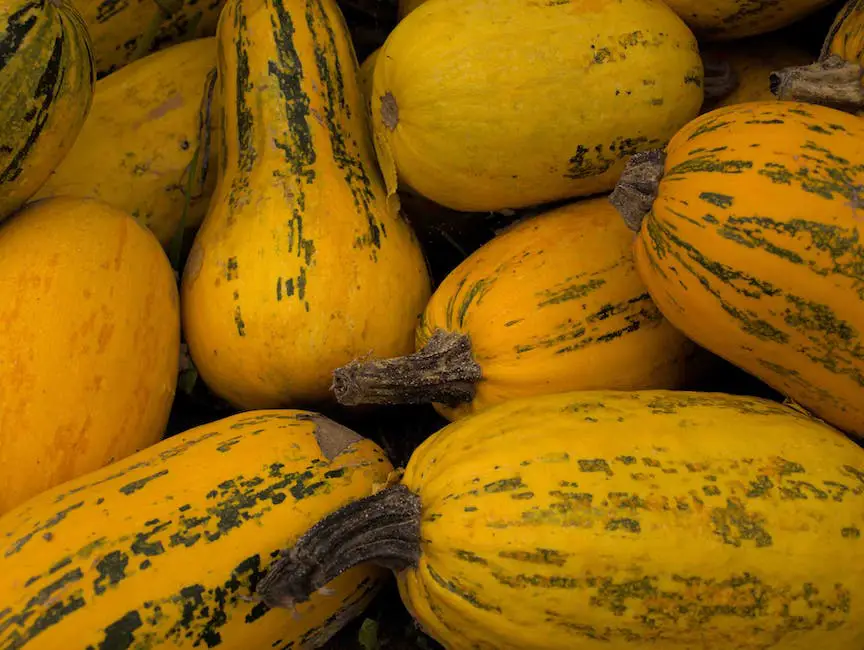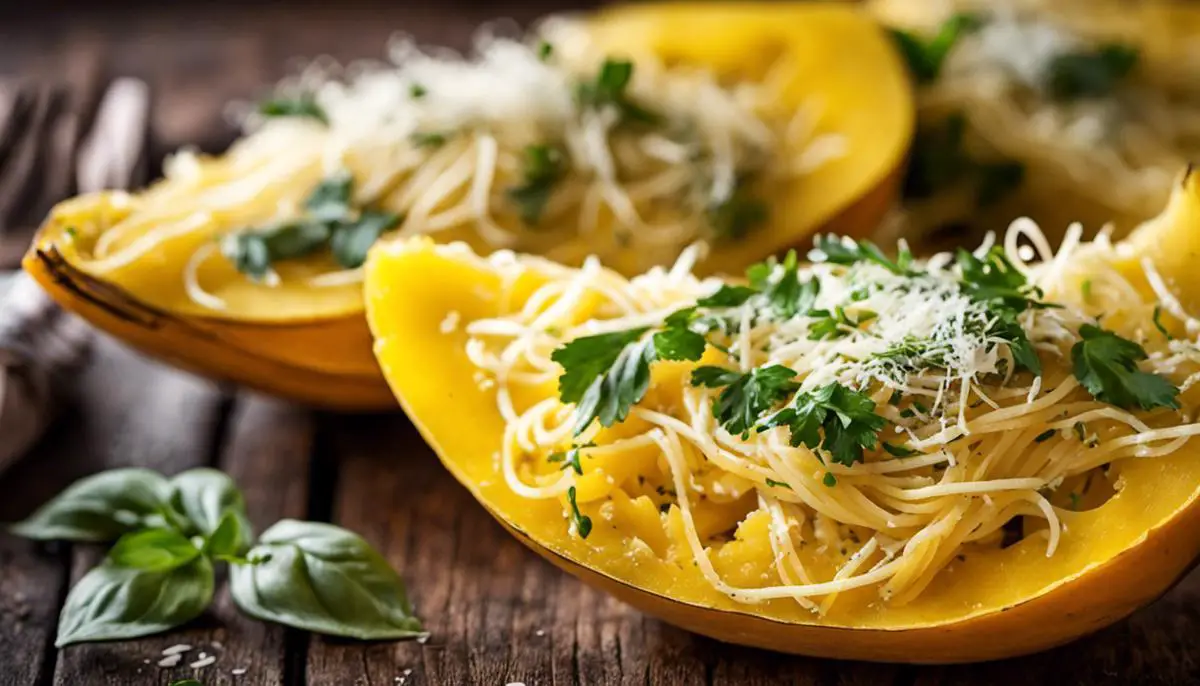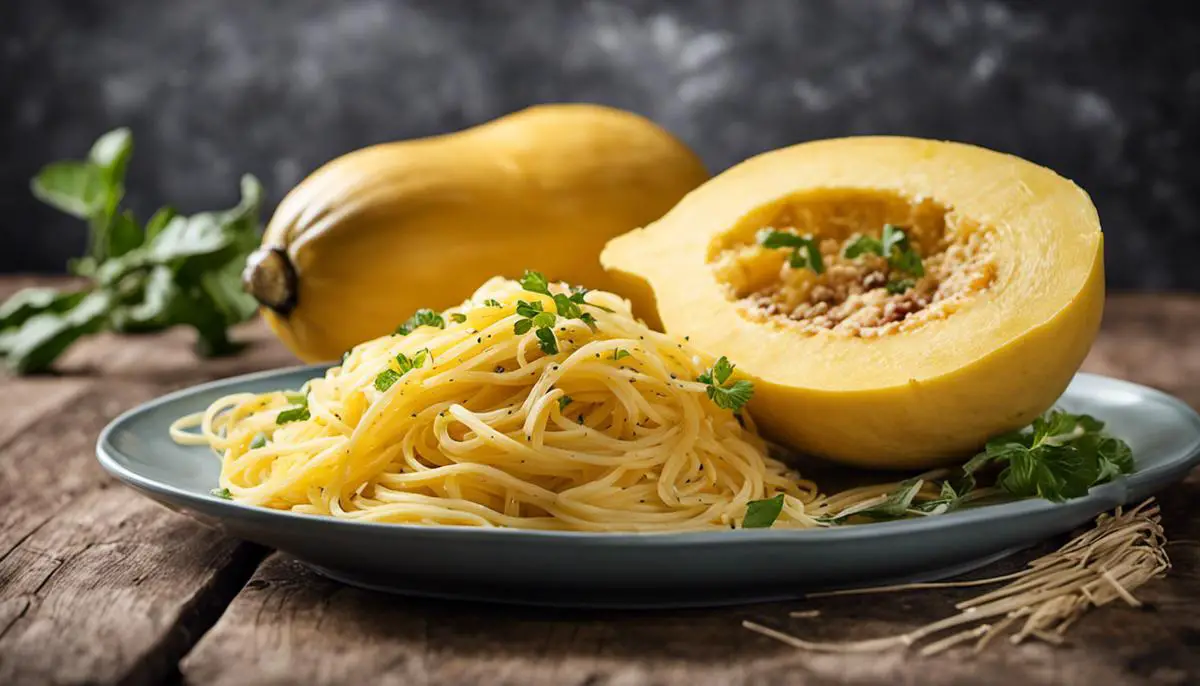Spaghetti Squash Recipes: Easy Meals with Nutrition and Variety
Envision a vegetable not only with high culinary versatility, but also an abundance of nutrients beneficial for overall health maintenance. Welcome your new food fascination: Spaghetti Squash. This delicious edible gourd brings to your plate immense nutrition wrapped with a flavor that subtly complements a myriad of dishes. It is low in carbohydrates and calories yet rich in vitamins, minerals, and fiber, promising numerous health benefits. With increasing public consciousness towards healthful eating, it becomes crucial to illuminate the nutritional bounty of this winter squash.

Spaghetti Squash Nutrition
Spaghetti Squash: A Nutritional Powerhouse
Spaghetti squash is not only a versatile food item, but also a nutritional powerhouse that everyone can benefit from. The vegetable is low in calories but high in a variety of essential nutrients. A single serving of spaghetti squash, which is approximately one cup, contains roughly 42 calories, 10 grams of carbohydrates, and 1 gram of protein. This makes it a perfect option for those looking to lose weight or maintain a healthy lifestyle.
Moreover, spaghetti squash is rich in essential vitamins and minerals. It possesses an abundance of vitamin C, which can help boost the immune system and protect against free radicals. It also includes a generous dose of vitamin B6, necessary for brain development and function. Additionally, spaghetti squash boasts a high fiber content which contributes significantly to digestive health.
Spaghetti Squash: Beneficial for Weight Loss and Overall Health
Spaghetti squash is an excellent tool for promoting and maintaining weight loss. Thanks to its high fiber content and low calorie count, it keeps you feeling full without a high-calorie intake. Fiber helps to slow digestion, which in turn promotes feelings of satiety and prevents overeating.
Furthermore, the nutritional components of spaghetti squash can be highly beneficial for overall health. The high amount of fiber can aid in lowering cholesterol levels, maintaining blood sugar levels, and promoting a healthy weight. Moreover, the presence of vitamins like vitamin C and B6 promotes skin health, boosts immunity, and fosters healthy brain function.
Dishes and Uses of Spaghetti Squash
Owing to its distinct texture and mild flavor, spaghetti squash can be used in a range of culinary dishes and preparations. When cooked, its flesh takes on a spaghetti-like quality, lending itself to the name ‘spaghetti squash’.
One common use is simply serving it as a lower-calorie, nutrient-rich alternative to conventional pasta or noodles. It can easily be incorporated into traditional pasta recipes, like spaghetti Bolognese or chicken Alfredo. You can also stuff spaghetti squash with other tasty ingredients such as mushrooms, spinach, and cheese to create a complete meal.
There is no quicker and easier method to cooking this vegetable than in a pressure cooker

Spaghetti Squash Preparation and Uses
What is Spaghetti Squash?
Spaghetti squash is a nutrient-rich vegetable that belongs to the winter squash family. When cooked, its flesh can be scraped out in long, spaghetti-like strands, giving it its name. It has a mild, sweet-nutty flavor, making it an excellent base for a variety of dishes. Additionally, its low-calorie content and abundant nutrients make it a favored choice in healthy eating.
Nutrition Benefits of Spaghetti Squash
Recognized as a powerhouse of nutrition, spaghetti squash is rich in antioxidants, vitamins, and minerals. One cup of cooked spaghetti squash boasts Vitamin C, manganese, Vitamin B6, pantothenic acid and niacin. It is also a good source of dietary fiber, which can aid digestion, control blood sugar, and contribute to weight loss. Furthermore, with its low-calorie count (approximately 42 calories per cup) and high water content, it’s a great addition to meals when trying to maintain a healthy weight.
Choosing and Storing Spaghetti Squash
When choosing spaghetti squash, look for a hard, dry rind free of soft spots or cracks. It should feel dense for its size. While it can be stored at room temperature, a cool, dark place is preferable, where it can last up to a month. If cut, it should be refrigerated and used within a week.
Spaghetti Squash Preparation in Pressure Cooker
There is no simpler method to cooking a spaghetti squash than using your pressure cooker. I personally use my Instant Pot. Add a cup of cold water, place the squash in whole and steam for 22 minutes for a small squash, up to 30 minutes for a large squash.
Release pressure and allow to cool for 5 minutes. After cooked, cut into rings for longer strands and scoop out the seeds, then use a fork to scrape out the “spaghetti” strands.

A Versatile Ingredient
Spaghetti squash shines in its versatility. It can be used as a low-carb alternative to pasta, a base for salads, or even stuffed with other ingredients. In American cuisine, it’s commonly served with marinara sauce and cheese. Mexican recipes might use it as a vessel, stuffing it with black beans, corn, and enchilada sauce. For an Asian-inspired dish, it can be stir-fried with vegetables and Tofu, with soy or teriyaki sauce.
Incorporating Spaghetti Squash Into a Balanced Diet
The mild flavor of spaghetti squash pairs well with a vast range of flavors, allowing it to fit seamlessly into any diet. Vegetarians and vegans often use it as a meat substitute, while those following low-carb or gluten-free diets enjoy it as a pasta alternative. Given its rich nutrient profile, it also serves as a valuable element in a balanced, nutrient-rich diet. It’s a stunning example of a dish that manages to balance health and flavor appealingly, explaining why spaghetti squash has become such a loved ingredient in kitchens around the globe.
A Versatile Vegetable in Your Kitchen
One of the main attractions of spaghetti squash is its versatility. Uniquely stringy flesh enables you to turn this vegetable into a low-carb substitute for traditional pasta. However, its applications are not limited to pasta dishes alone. The sweet-nutty flavor of spaghetti squash pairs well with a range of other ingredients, allowing for a bevy of creative culinary explorations. It can be used in salads, side dishes, casseroles, and even in baking – think crispy spaghetti squash hash browns or a surprise element in your muffins!
Unforgettable Dishes with Spaghetti Squash
There are countless ways to incorporate spaghetti squash into your meals. Consider, for example, a spaghetti squash lasagna, where layers of roasty squash replace traditional pasta sheets, creating a wholesome and heart-warming family meal. Or stir-fry it with your favorite protein, a rainbow of vegetables, and some Asian-style spices for a light and healthy meal. Feel like going all-in on comfort food? Try baking your spaghetti squash, stuffing it with cheese and various fillings, then popping it back in the oven until it turns into a savory, gooey delight.

Integrating spaghetti squash into your regular diet is not just about embracing a culinary novelty, but about welcoming a healthier lifestyle. It is a celebrated whole food that’s low in calories and high in fiber, offering a myriad of essential vitamins and minerals. The versatility of spaghetti squash is another of its magnetic qualities, effortlessly fitting into diverse meal plans. From salads, soups, to delightful entrees, spaghetti squash can dramatically enhance the taste and nutrient quotient of your dishes. As we venture further into the realm of healthful eating, let’s unlock the potential of humble ingredients like spaghetti squash and rejoice in the fusion of taste and nutrition right on our plates.
